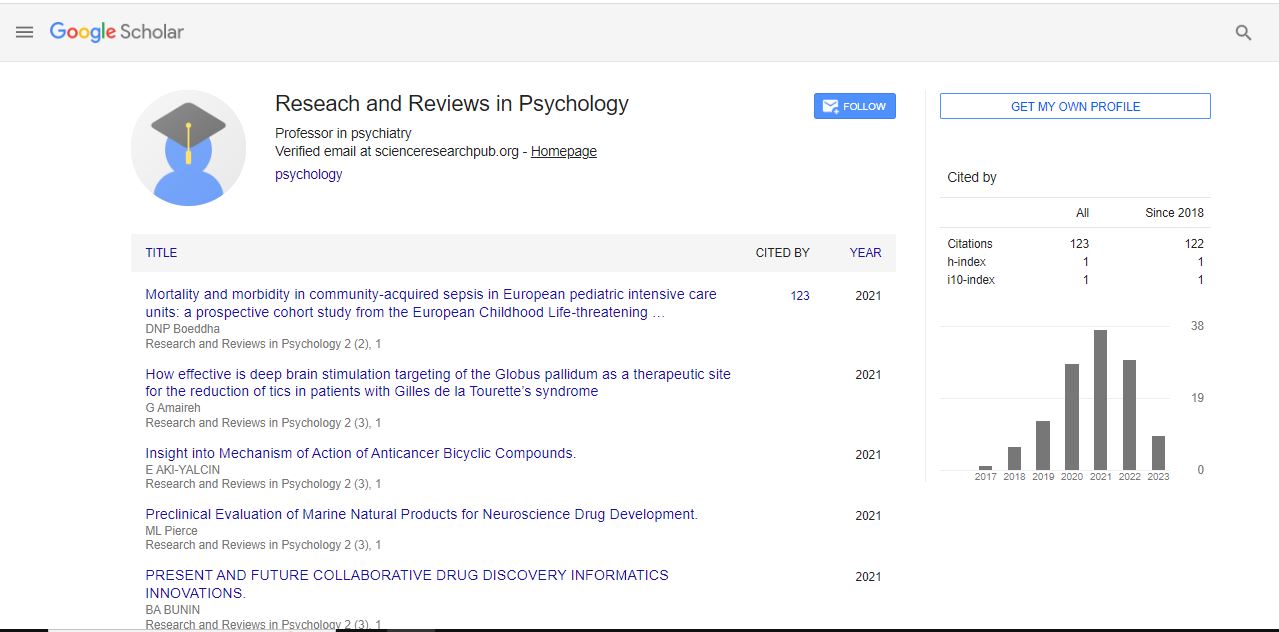Short Communication, Res Rev Phys Vol: 2 Issue: 6
Healthy environments for children with autism
Shireen Mohammad Kanakri Ball State University, USA
Abstract
Autism has been generally ignored by the interior design community and excluded from building codes and guidelines even those developed specifically for special needs individuals. In reference to this exclusion, Baron, of the International Code Council Stated, “I know of no building or accessibility code that incorporates requirements specifically to address children with autism. Therefore, one of the primary aims of this research is to correct this exclusion by developing a preliminary framework of interior design guidelines for autism. Deasy and Laswell discuss the architect’s use of common patterns of cognition to guide and manipulate user behavior in a space. If one looks at the meaning or the cognitive value given to an experience, it becomes clear the way in which a user typically interprets his interior environment. Acoustics is one of the most important issues in interior design. No specific references are made in the mandates regarding individuals with developmental disorders or autism but the term “consideration” is used in reference to “other communication disorders” (UN Global Program on Disability, 1993). To reach this goal of developing a framework for architectural guidelines for autism, an extensive literature review was conducted. Research results indicate that environment is important to the treatment of autism because it influences behavior. This research gives practical solutions that architects and designers can use to modify the environment for children with autism. These modifications will help these children develop their skills, cope with auditory problems and improve their behaviors.
Keywords: Healthy environments
Autism has been generally ignored by the interior design community and excluded from building codes and guidelines even those developed specifically for special needs individuals. In reference to this exclusion, Baron, of the International Code Council Stated, “I know of no building or accessibility code that incorporates requirements specifically to address children with autism. Therefore, one of the primary aims of this research is to correct this exclusion by developing a preliminary framework of interior design guidelines for autism. Deasy and Laswell discuss the architect’s use of common patterns of cognition to guide and manipulate user behavior in a space. If one looks at the meaning or the cognitive value given to an experience, it becomes clear the way in which a user typically interprets his interior environment. Acoustics is one of the most important issues in interior design. No specific references are made in the mandates regarding individuals with developmental disorders or autism but the term “consideration” is used in reference to “other communication disorders” (UN Global Program on Disability, 1993). To reach this goal of developing a framework for architectural guidelines for autism, an extensive literature review was conducted. Research results indicate that environment is important to the treatment of autism because it influences behavior. This research gives practical solutions that architects and designers can use to modify the environment for children with autism. These modifications will help these children develop their skills, cope with auditory problems and improve their behaviors.
 Spanish
Spanish  Chinese
Chinese  Russian
Russian  German
German  French
French  Japanese
Japanese  Portuguese
Portuguese  Hindi
Hindi 